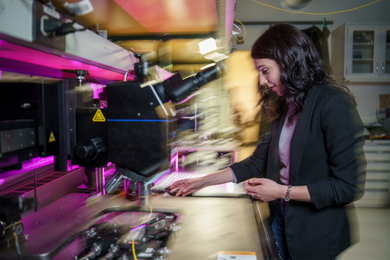Professor Emeritus Eugene E. Covert of aeronautics and astronautics is going to receive one of the most prestigious awards in aviation: the Daniel Guggenheim Medal.
The Guggenheim Medal, established in 1929, was first awarded to aviation pioneer Orville Wright. Over the ensuing years, recipients have included some of the greatest names in aerospace. Many have been MIT alums and faculty, including Jerome Hunsaker (founder of MIT aeronautics), Donald Douglas, Charles Stark Draper and Robert Seamans.
Jointly sponsored by the American Institute for Aeronautics and Astronautics (AIAA), American Society of Mechanical Engineering, American Helicopter Society, and Society of Automotive Engineers, the medal recognizes individuals who make profound contributions to advancing aeronautics. Covert's award cites him for "exemplary leadership in aeronautics teaching and research, development of significant state-of-the-art aerodynamic testing techniques and outstanding contributions to public service."
Covert will receive the medal at the AIAA Aerospace Spotlight Awards Gala in Washington, D.C., next April.
"Gene's contributions to aerospace research, education and public service are equally profound and we're thrilled he's been honored with this highest form of recognition," said Professor Wesley Harris, aero-astro department head. "The entire aero-astro department celebrates with him."
Covert's aeronautics career began in 1946 at the Naval Air Modification Unit's Pilotless Aircraft Division, where he worked on projects leading to the Sparrow missile. In the 1950s he conducted tests on numerous aircraft types, including the famed F-4 Phantom, at the MIT Naval Supersonic Wind Tunnel. His interest in the problems of model support led him to develop the world's first practical wind tunnel magnetic suspension system.
From 1972-73, Covert was chief scientist of the U.S. Air Force, and from 1978-79, he was technical director of the European Office of Aerospace Research and Development. Later, he was a NASA consultant on the Space Shuttle main engine, and he was a member of the commission that examined the Challenger accident.
Covert was appointed to the MIT faculty in 1963 and was aero-astro department head from 1985 until 1990.
A native of Rapid City, S.D., Covert holds an S.B. and S.M. from the University of Minnesota, and an Sc.D. (1958) from MIT. He lives in Cambridge with his wife, Mary Rutford Covert.
A version of this article appeared in MIT Tech Talk on November 9, 2005 (download PDF).






